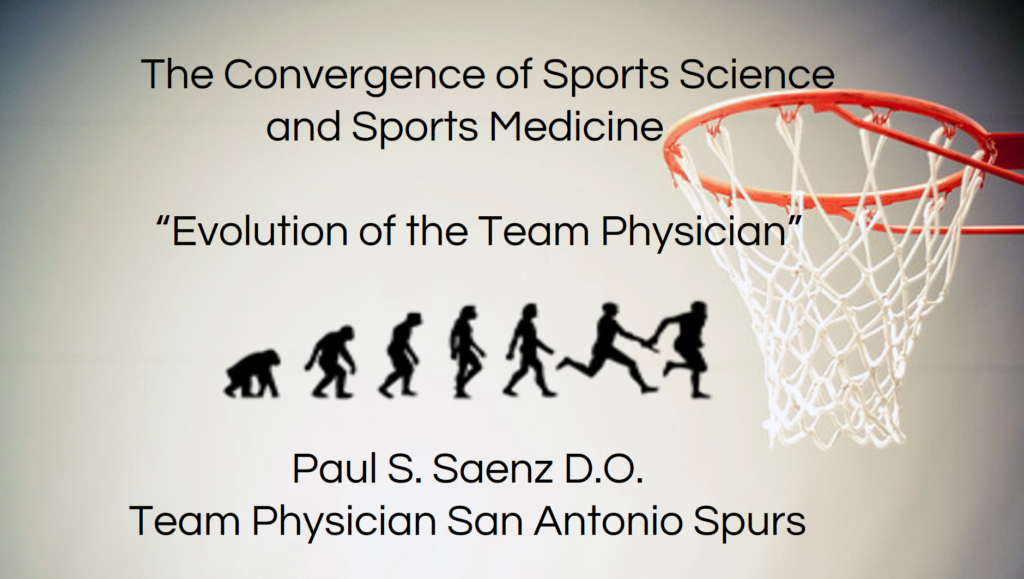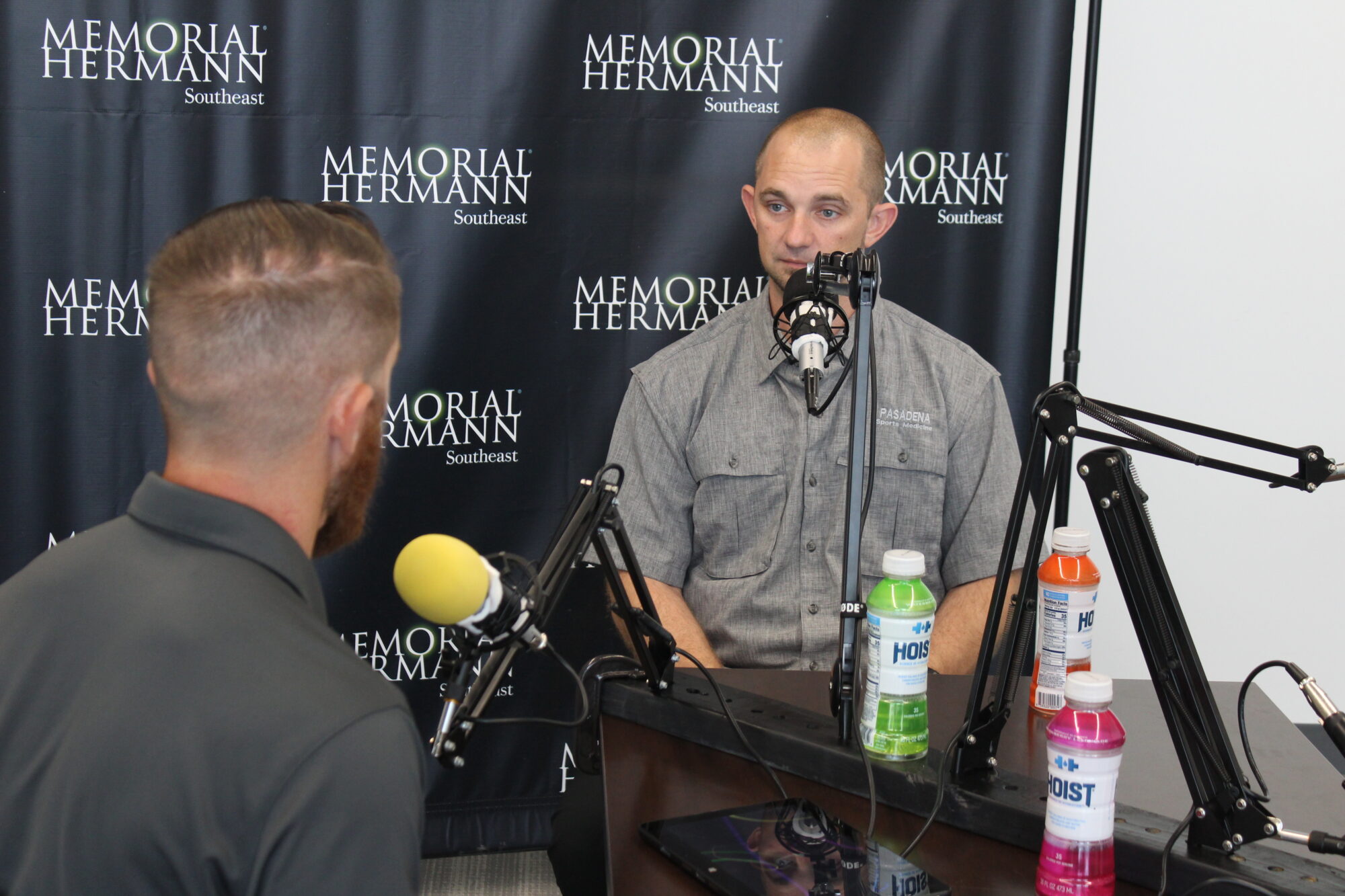Podcast: Play in new window | Download
Dr. Paul Saenz shares how the San Antonio Spurs have used Sports Science to help their Sports Medicine.
Complete the course work to earn Category A CEUs sponsored by Methodist Healthcare Sports Medicine of San Antonio – SportsMedicineBroadcast.com/CEU

The Spurs have always been on a leading edge of performance have looked at best practices around the globe.
The sports medicine team consists of at least 10 positions with multiples at several of these positions.
ATs serve as the backbone and primary interface between the players and the medical team.
WHY monitor?
- Direct Feedback
- Injury prevention
- Performance enhancements
- Rehabilitation baselines
Key facets of Athletic Performance
Strength
Aerobic Capacity
Nutrition
Recovery – has replaced the word “rest” – its intentional
Psychological Wellness – they fill out these surveys onn a daily basis
What to Monitor with Sports Science
Games and Training – volumes and intensity
Player Strength and conditioning
Fatigue / Recovery
Player Availability ( injury incidence and prevalence)
Types of Loads
External – the physical load they have endured
- Road cyclist – mean power output for given duration – 400 watts for 30 minutes
Internal – how have they responded physiologically
- HR, RPE, Blood lactate, cortisol, testosterone, inflammatory biomarkers
External Load Monitoring
Time Motion analysis – GPS and digital video movement analysis
Accelerometer Data –
- Catapult system – GPS wearable system that monitors elapsed exercise time.
Neuromuscular function
The huge collection of data requires the skill to extrapolate and draw conclusions.
Internal Load Monitoring
RPE – Relative Perceived Exertion
Heart Rate Response
Biochemical
Weight
Adductor Squeeze
Dorsi-flexion lunge
Isometric lunge
RPE Scale
Self-determined assessment of exercise intensity
Correlates well with heart rate
Blood draws can be done during this time.
Cardio Recovery
Heart Rate Recovery – how quickly your heart rate returns to normal
Markers of fatigue vs fitness
Yo-Yo Intermittent Recovery Test
- Short intense runs with brief recovery periods
- https://www.youtube.com/watch?v=nkOk_P5VnOA
Salivary Biomarkers
testosterone /Cortisol markers of stress and recovery
Anabolic vs Catabolic state
Adductor Squeeze
Done with a blood pressure cuff
Very well documented with European teams
Recovery Methods
Light cardio
Massage
Cryotherapy – whole body cryotherapy
– reduces edema and positive effects on the autonomic system
Pulsed compression – NormaTec type
- Convenient for air travel or post-game
Aquatic Therapy –
AlterG
NordBoard
Measures ongoing hamstring health over the course of the season
Which Sports Science Tests to Choose?
Most relevant to your use
Practical implementation
Most reliable
Produce actionable intel
Key points to make it effective
Make sure your athletes understand
Make sure your coaches understand
Be consistent in implementation
Consider the data but make clinical decisions
What about electronic recovery units like Compex, MarcPro or Firefly
These are great options
Do not forget cold tubs or
SLEEP
Stationary bikes
Group session in a pool
How do we apply the Sports Science data in our high schools?
Focus more on periodization of training.
COVID19 emphasizes the need for that.
The Yo-Yo test is simple and easily performed
Talking to your athletes individually
https://www.facebook.com/sportsmedicinebroadcast/videos/1123009438093307/
Contact Us:
Dr. Paul Saenz – get a hold of Shawn Ready
Shawn Ready – @ShawnReady_ATC
Financial supporters that make the podcast possible.
Frio Hydration – Superior Hydration products.
Donate and get some swag (like Patreon but for the school)
HOIST – No matter your reason for dehydration DRINK HOIST
MedBridge Education – Use “TheSMB” to save some, be entered in a drawing for a second year free, and support the podcast.
Marc Pro – Use “THESMB” to recover better.

Complete the course work to earn Category A CEUs sponsored by Methodist Healthcare Sports Medicine of San Antonio – SportsMedicineBroadcast.com/CEU
